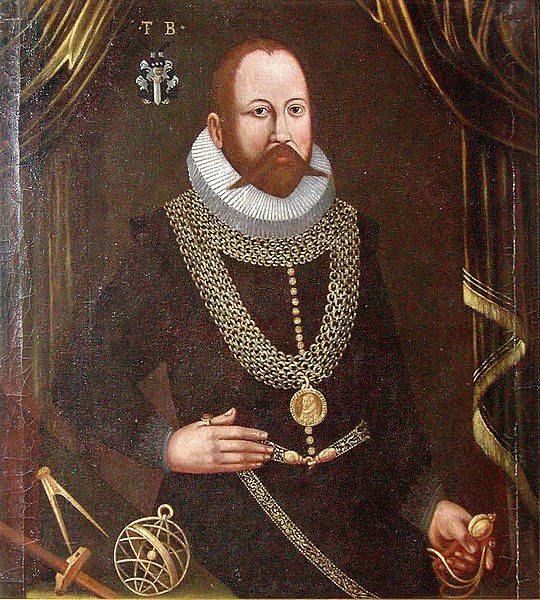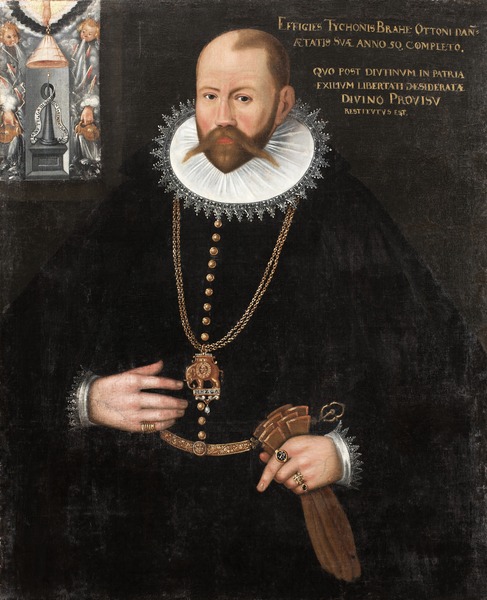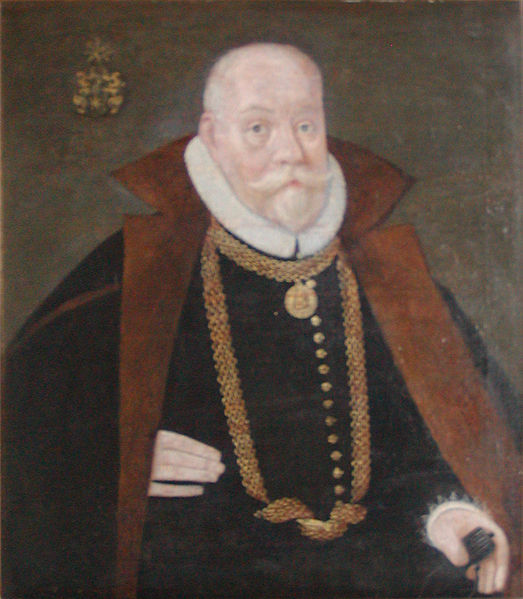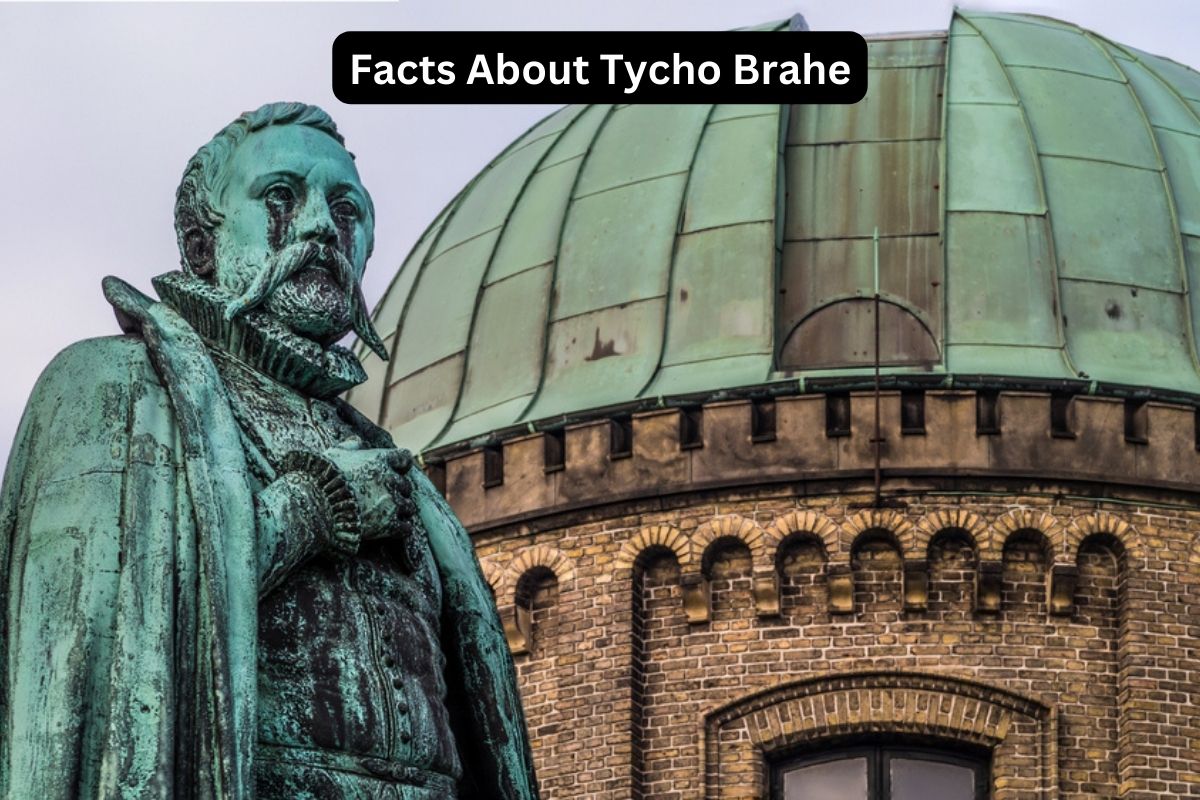Tycho Brahe, born on December 14, 1546, in Knutstorp, Scania (now part of Sweden), was a Danish nobleman and astronomer of the Renaissance era.
His life was marked by a unique blend of astronomical curiosity, meticulous observations, and even a notable dueling injury that left him with a brass prosthetic nose.
Brahe’s groundbreaking work in precise astronomical observations, instrument design, and collaboration with Johannes Kepler laid the foundation for significant advancements in our understanding of the cosmos and the eventual acceptance of the heliocentric model of the solar system.
Tycho Brahe Facts
1. Born on December 14, 1546, in Knutstorp, Scania (now part of Sweden)
Tycho Brahe was born on December 14, 1546, in Knutstorp, which was then part of Scania, a region that is now part of modern-day Sweden.
He was born into a noble Danish family, the Brahe family, which had a long history of service to the Danish crown.
His full name was Tyge Ottesen Brahe, but he is more commonly known by his Latinized name, Tycho Brahe.

2. Studied law at the University of Copenhagen but had a strong interest in astronomy
Tycho Brahe initially pursued a career in law and attended the University of Copenhagen. However, his life took a different turn when he witnessed a total solar eclipse at the age of 14 in 1560.
Also Read: Tycho Brahe Accomplishments
This celestial event left a profound impact on him and sparked his interest in astronomy. He began to study and observe the night sky, eventually becoming one of the most prominent astronomers of his time.
3. Lost part of his nose in a duel in 1566 and wore a brass prosthetic nose
One of the most curious and well-known episodes in Tycho Brahe’s life was the infamous nose duel. In 1566, while studying in Germany, Brahe engaged in a heated argument with another Danish nobleman named Manderup Parsberg.
The disagreement escalated into a duel, during which Brahe’s nose was severely injured, and a significant portion of it was sliced off. As a result of this injury, he wore a prosthetic nose made of brass for the rest of his life, a distinctive feature that added to his eccentric persona.
4. Known for meticulous and accurate astronomical observations
Tycho Brahe was renowned for his meticulous and highly accurate astronomical observations. Unlike many astronomers of his time, he made his observations without the aid of telescopes, as telescopes had not yet been invented.
Brahe meticulously recorded the positions of stars, planets, and other celestial objects with remarkable precision. His extensive and systematic records laid the foundation for many future advancements in astronomy and the understanding of the night sky.

5. Designed and built his own astronomical instruments
To support his precise observations, Tycho Brahe designed and constructed a range of sophisticated astronomical instruments.
Among his inventions were large quadrant and sextant instruments, which he used to measure the positions of stars and planets with great accuracy.
These instruments were key to his success in recording celestial positions and helped him amass a vast amount of valuable astronomical data during his lifetime.
6. Discovered a new star (supernova) in Cassiopeia in 1572
One of Tycho Brahe’s most significant contributions to astronomy was his discovery of a new star, or what we now understand to be a supernova, in 1572. This event occurred in the constellation Cassiopeia.
The appearance of this “new star” challenged the prevailing belief that the celestial sphere was unchanging, as it contradicted the Aristotelian notion that the heavens were immutable and perfect.
Brahe’s observations of the 1572 supernova played a crucial role in reshaping the understanding of the cosmos at the time.
7. Engaged in the parallax controversy and supported a geocentric view
Tycho Brahe’s observations of the new star (supernova) in 1572, as well as his extensive data on the positions of celestial objects, played a central role in the scientific debate known as the “parallax controversy.”
At the time, proponents of the heliocentric model of the universe, such as Nicolaus Copernicus, argued that Earth revolved around the Sun. One of the expected consequences of Earth’s motion would be the observation of stellar parallax, which is the apparent shift in the positions of nearby stars due to Earth’s orbit around the Sun.
However, Brahe’s precise measurements failed to detect any significant parallax, leading him to support a geocentric view of the universe. This controversy would continue to shape astronomical thought for decades.

8. Had notable collaborators, including Johannes Kepler
Tycho Brahe had several notable collaborators and assistants throughout his career. One of the most significant was Johannes Kepler, a German mathematician and astronomer.
Kepler worked with Brahe at his observatory on the island of Hven and later used Brahe’s extensive observational data to develop his three laws of planetary motion. This collaboration between Brahe and Kepler led to significant advancements in our understanding of the motion of celestial bodies.
9. Built the Uraniborg Observatory on the island of Hven
Tycho Brahe built the Uraniborg Observatory on the island of Hven in the late 16th century. This observatory was a state-of-the-art facility for its time and featured various astronomical instruments designed and built by Brahe himself.
Uraniborg served as the center of Brahe’s astronomical research and observations, and it played a crucial role in the collection of his precise data.
10. His data contributed to the development of Kepler’s laws and the acceptance of the heliocentric model
Tycho Brahe’s contributions to astronomy left a lasting legacy in the field. His meticulous observations and accurate measurements paved the way for the development of Johannes Kepler’s laws of planetary motion, which in turn influenced Isaac Newton’s work on universal gravitation.
Brahe’s data also played a pivotal role in the eventual acceptance of the heliocentric model of the solar system, even though he personally supported a geocentric view. His dedication to empirical observation and instrument-building established a standard of excellence in observational astronomy that continues to inspire scientists to this day.
